Teachers often ask us for cost-effective ways to get their classes started with electronics, and SparkFun's instructors recommend a paper circuit greeting card or light-up pin – even our Microcontrollers for Educators professional development workshop begins with a simple paper circuit activity.
Paper circuit projects can be made out of a variety of materials, and can be adapted for a wide range of visual results.
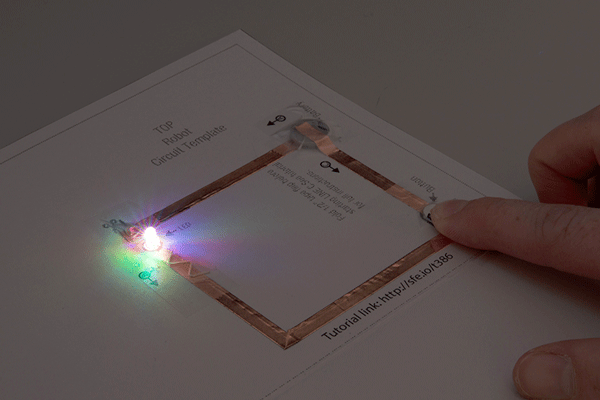
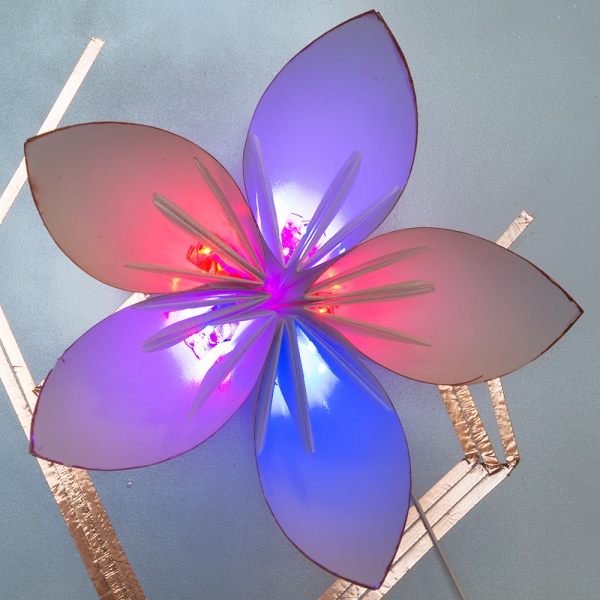
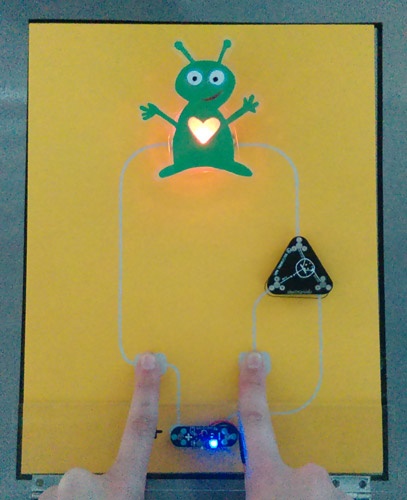
I'm a novice in the realm of electronics and technology, and I love the low barrier-to-entry that paper circuits offer. I combined my love of thrift store treasure hunting and my professional work to create this fun project that could easily be adapted for the classroom!
The first step in this project was to head to the thrift store to pick up a few abandoned paintings to light up. I tried to search for and identify aspects of the artwork that would look good with lights. My goal was to seamlessly incorporate the electronics with the existing artwork, and I based my selections on what I thought would work best. I ended up purchasing three pieces of artwork totaling $11!
I then searched the SparkFun catalog to determine the best hardware for the job. I knew I wanted to use copper tape and our newly restocked Chibitronic LED stickers. After consulting some more experienced makers, I decided to use the LilyPad Battery Holder as the power source, and the LilyTwinkle and LilyTiny for two of the paintings with multiple LEDs.
After identifying the parts I wanted to light up, I laid out my LED stickers in the correct orientation and created a circuit to connect the lights to the power source and LilyPad board. I decided to solder the boards, lights and copper wire for a more secure connection.
Here is what the individual circuits look like from behind!
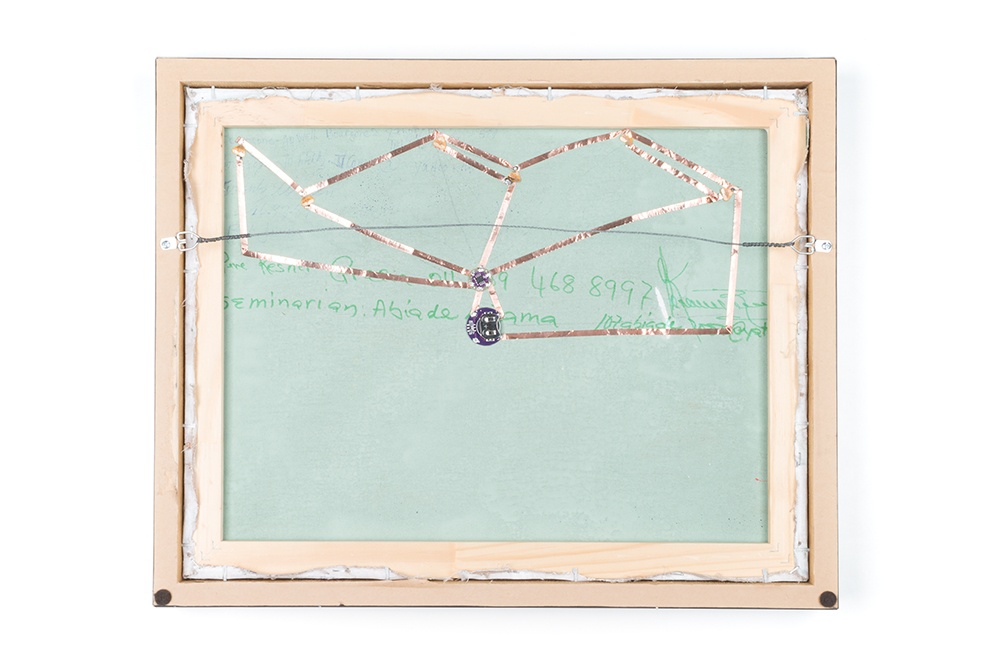
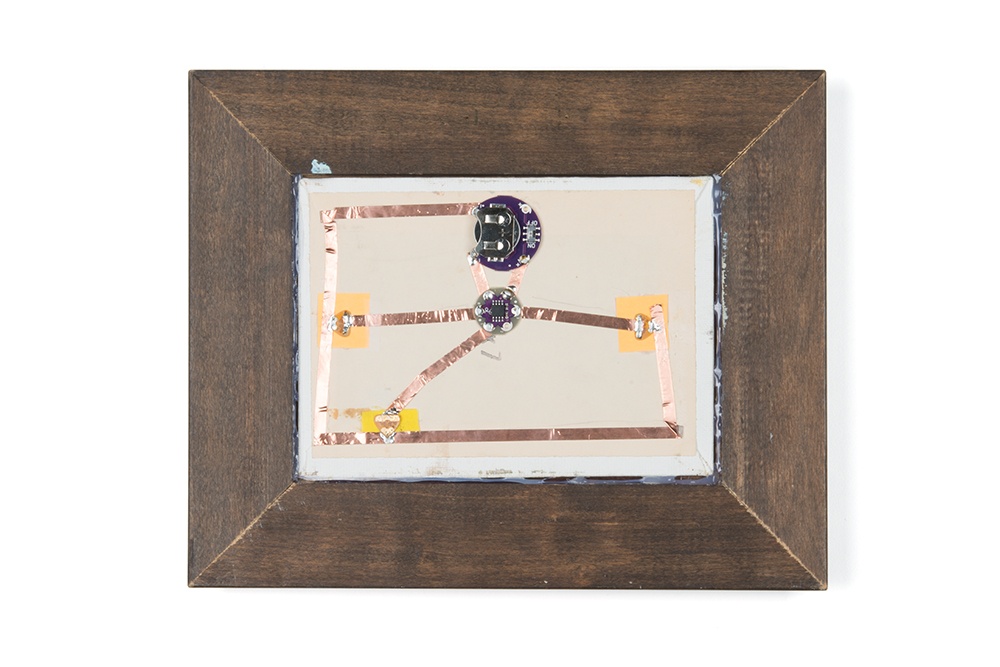
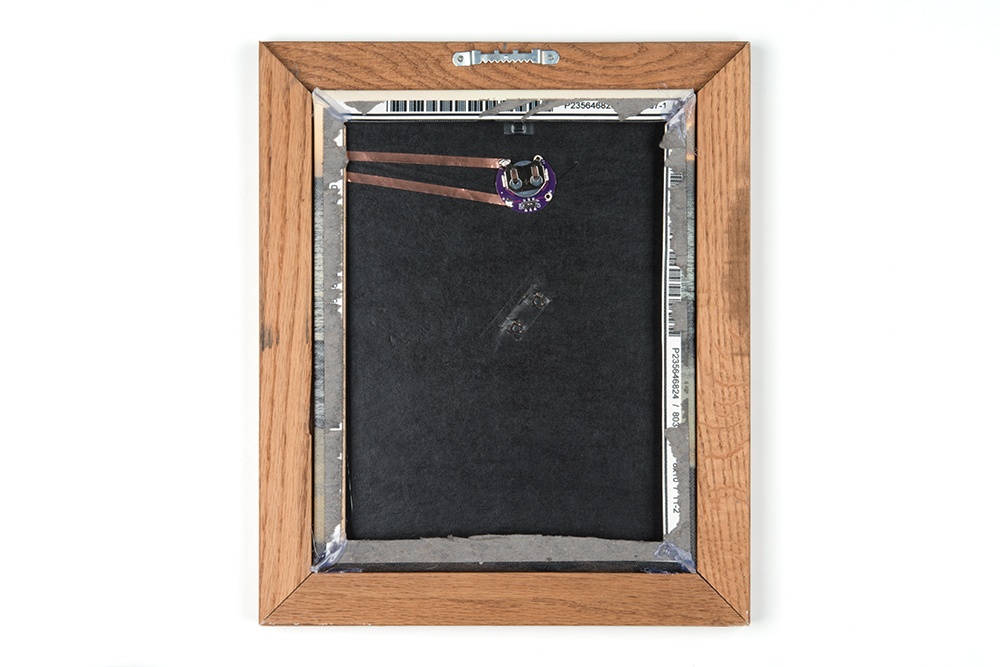
As you can see, each piece's circuit layout varies – this may take some trial and error before the right layout is found.
Here are the finished pieces, which I turned into a gallery wall!
.jpg?width=1000&height=667&name=Maya's%20LED%20Thrift%20Shop%20Paintings-01%20(1).jpg)
This project can also be done using original artwork produced by students. Display them individually in your classroom or cluster together for a gallery effect, like I did.
There are a couple of things I would have done differently, but I think the result was successful and I am happy with the way it all turned out. I have even gotten a few requests to turn regular old art around the office into light-up art!



paper circuits, basic circuits, STEM